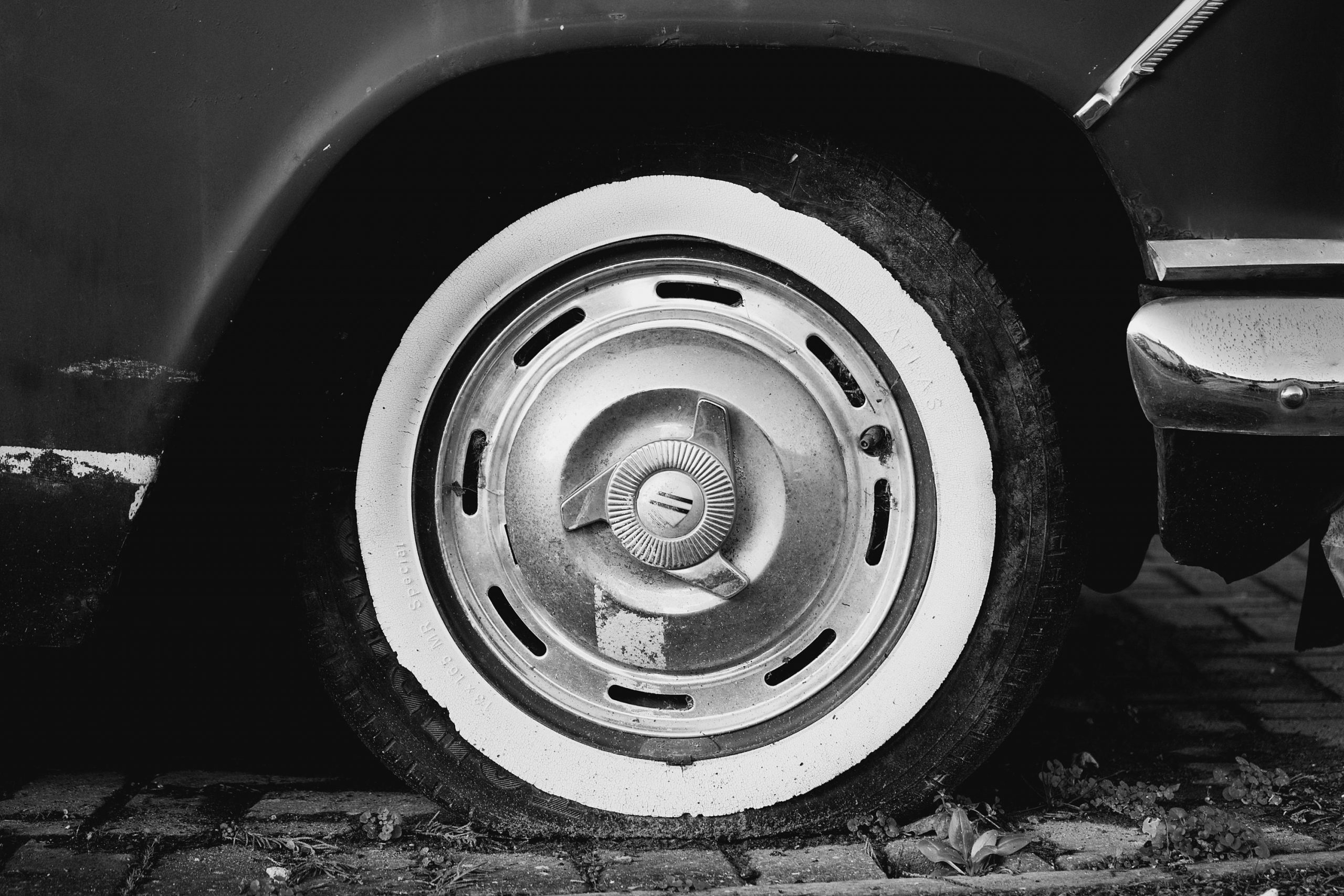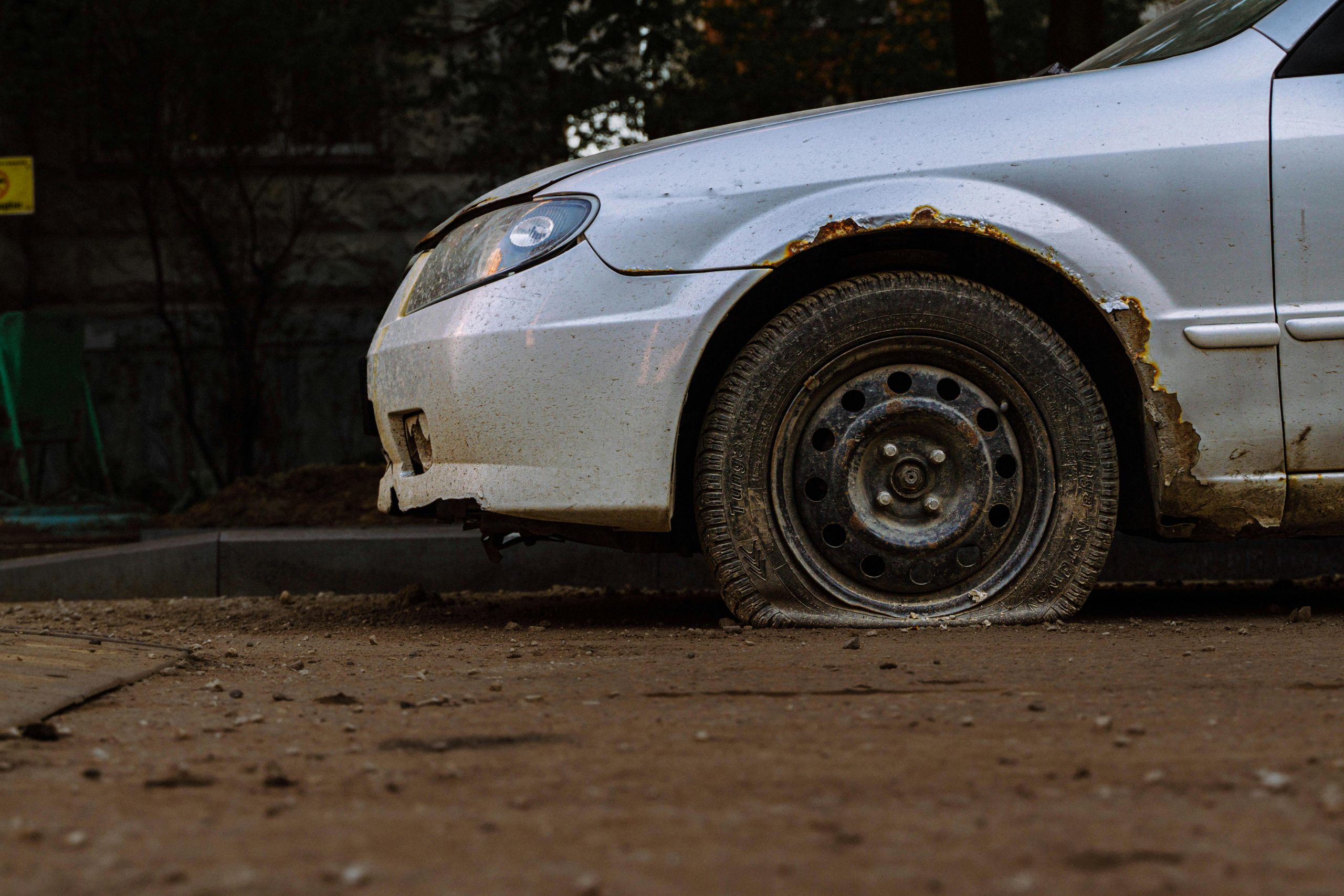Getting a flat tire can be frustrating, especially when it happens on a busy road or during a long trip. But one of the first questions many drivers ask is: Does car insurance cover flat tires? The answer isn’t always simple—it depends on what caused the flat and the type of insurance policy you have. In this guide, we’ll break down everything you need to know, from the types of coverage that may apply to how to file a claim.
What Causes Flat Tires?

Before diving into insurance details, it helps to understand why tires go flat in the first place. Some of the most common causes include:
- Punctures from nails, screws, or glass
- Hitting potholes or curbs
- Tire blowouts from overloading or overheating
- Valve stem damage
- Tire wear or dry rot
These issues fall under different categories of tire damage. Knowing the types of tire damage will help you figure out whether your situation is covered by insurance or not.
Types of Car Insurance and Flat Tire Coverage
Let’s explore the main types of car insurance and whether they cover flat tires.
1. Liability Insurance
Covers: Damage you cause to other people and property.
Covers Flat Tires? ❌ No.
Liability insurance is required in most states, but it only covers damage you cause to others—not damage to your own vehicle or tires.
2. Collision Coverage
Covers: Damage to your vehicle caused by an accident (regardless of fault).
Covers Flat Tires? ✅ Sometimes.
If your flat tire is caused by a crash or running into a pothole, collision coverage may help pay for the damage. However, you’ll still need to meet your deductible first, and your insurer may only cover the tire if other parts of the vehicle were also damaged.
3. Comprehensive Coverage
Covers: Non-accident damage, like theft, vandalism, or natural disasters.
Covers Flat Tires? ✅ In specific cases.
If someone slashes your tires or a tree branch falls on them, comprehensive coverage may apply. Again, this depends on the cause and your deductible.
4. Roadside Assistance Coverage
Covers: Emergency help for things like flat tires, dead batteries, or lockouts.
Covers Flat Tires? ✅ Yes, for service—not repairs.
Roadside assistance doesn’t pay to replace a tire but can help with services like putting on your spare tire or towing your car to a repair shop.
5. Tire Protection Plans (Not Insurance)
Covers: Tire damage from road hazards, usually purchased from a dealership or tire shop.
Covers Flat Tires? ✅ Yes, if included.
These plans are separate from car insurance but may be worth considering if you want peace of mind about your tires.
When Is a Flat Tire Covered by Insurance?
Not all flat tires are covered by car insurance. Coverage depends on how the damage happened and what type of policy you have. Here’s a breakdown of common flat tire situations and whether your insurance is likely to help:
- Ran over a nail: Not covered. This is considered normal wear and tear and is your responsibility to fix.
- Tire damaged in a car accident: Covered. If the flat tire is a result of a crash, your collision coverage may pay for the damage.
- Tire slashed by a vandal: Covered. Comprehensive coverage usually applies in cases of vandalism.
- Hit a pothole: Possibly covered. Some collision coverage plans may cover damage caused by road hazards like potholes.
- Flat tire in your driveway: Not covered. Unless the flat is caused by something like theft or vandalism, insurance generally won’t apply.
- Blown tire while driving: Not covered. A blowout from wear and tear isn’t covered, but if it causes an accident or other damage, that might be.
Always check your individual policy details or speak with your insurer to know for sure what’s included in your plan.
What Insurance Doesn’t Cover

Most standard auto insurance policies don’t cover regular tire wear or damage caused by lack of maintenance. Here’s what usually isn’t covered:
- Bald or worn-out tires
- Old tires with dry rot
- Damage from underinflation or overinflation
- Improper installation or alignment issues
- Replacing tires due to age
In short, if the flat is your fault due to neglect or normal use, insurance likely won’t help.
Types of Tire Damage That May Be Covered
Some tire problems may fall under specific types of damage that your policy might help with. For example:
- Punctures from road debris – Usually not covered unless you have a road hazard protection plan.
- Blowouts from potholes – Might be covered under collision insurance.
- Slashed or vandalized tires – Usually covered under comprehensive coverage.
- Sidewall damage from accidents – May be covered under collision insurance.
Understanding the types of tire damage that occur will help you better explain your case to your insurance company.
Should You File a Claim for a Flat Tire?
Even if your flat tire is technically covered, it may not be worth filing a claim. Here’s why:
- Deductible: Most people have deductibles between $500 and $1,000. A new tire usually costs much less.
- Premium Increase: Filing a claim might raise your rates.
- Claim Denial: If the insurer determines it’s wear and tear, they might deny the claim.
Only file a claim if the tire damage is part of a bigger problem—like body damage from hitting a pothole or getting into an accident.
How to Handle a Flat Tire
Here’s what to do if you find yourself with a flat tire:
- Pull Over Safely: Turn on your hazard lights and move to the shoulder or a parking lot.
- Check the Damage: Look for nails, glass, sidewall bulges, or signs of a blowout.
- Use a Spare Tire or Call for Help: If you have a spare and know how to change it, do so. If not, call roadside assistance.
- Visit a Tire Shop: Have the tire inspected. They’ll let you know if it can be repaired or if it needs replacement.
- Check Insurance or Roadside Coverage: Call your insurance provider if you think the damage might be covered.
Preventing Flat Tires
While not all flats can be avoided, you can reduce the risk with a few simple steps:
- Check tire pressure at least once a month.
- Avoid potholes, construction zones, and curbs.
- Don’t overload your vehicle.
- Replace tires when tread is worn.
- Have regular inspections done by professionals.
Taking care of your tires also keeps you safer and saves money over time.
Frequently Asked Questions
Q: Does full coverage include flat tires?
A: “Full coverage” usually means collision + comprehensive. These may help with tire damage from accidents or vandalism, but not from wear and tear.
Q: Is a nail in the tire covered?
A: No, not by standard insurance. Some tire shops offer protection plans that do cover this.
Q: What if someone slashes my tires?
A: File a police report and a comprehensive claim with your insurance company.
Q: Is towing for a flat tire covered?
A: Only if you have roadside assistance or towing coverage.
Q: Will I get reimbursed for replacing a flat tire?
A: Only if the cause of the flat is covered under your policy and the cost exceeds your deductible.
Final Thoughts
So, does car insurance cover flat tires? The answer depends on the cause. Most flat tires from wear and tear aren’t covered. But if the damage was caused by an accident, vandalism, or road hazard—and you have the right coverage—you might get help with repair or replacement.
Understanding your policy is key. Take time to read your plan or talk to your agent so you’re not surprised when a flat tire ruins your day. Whether it’s a simple puncture or more severe types of tire damage, knowing what’s covered can save you money, time, and stress.
Stay safe—and check your tire pressure!
